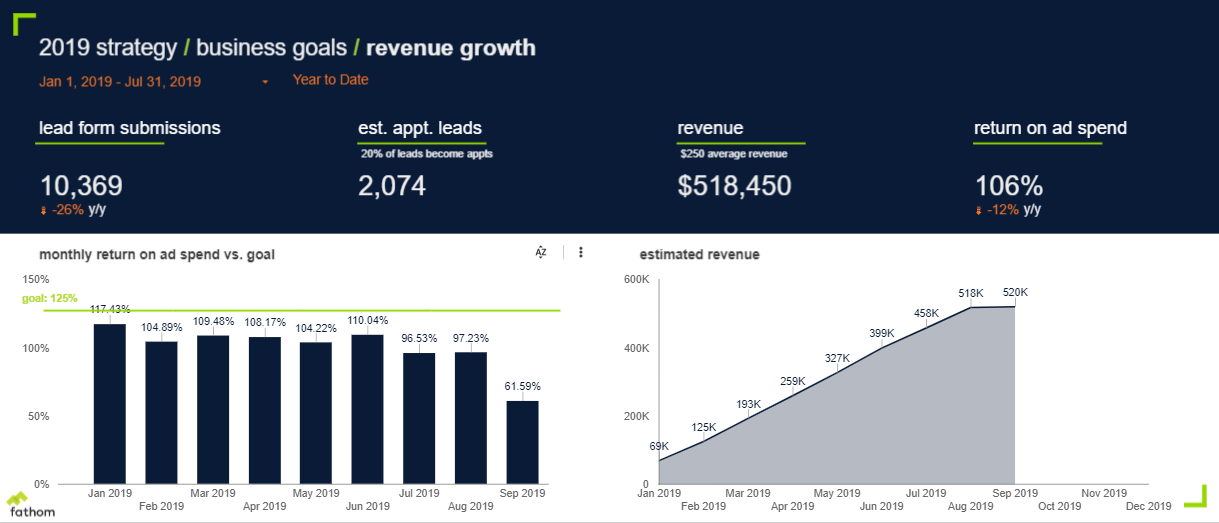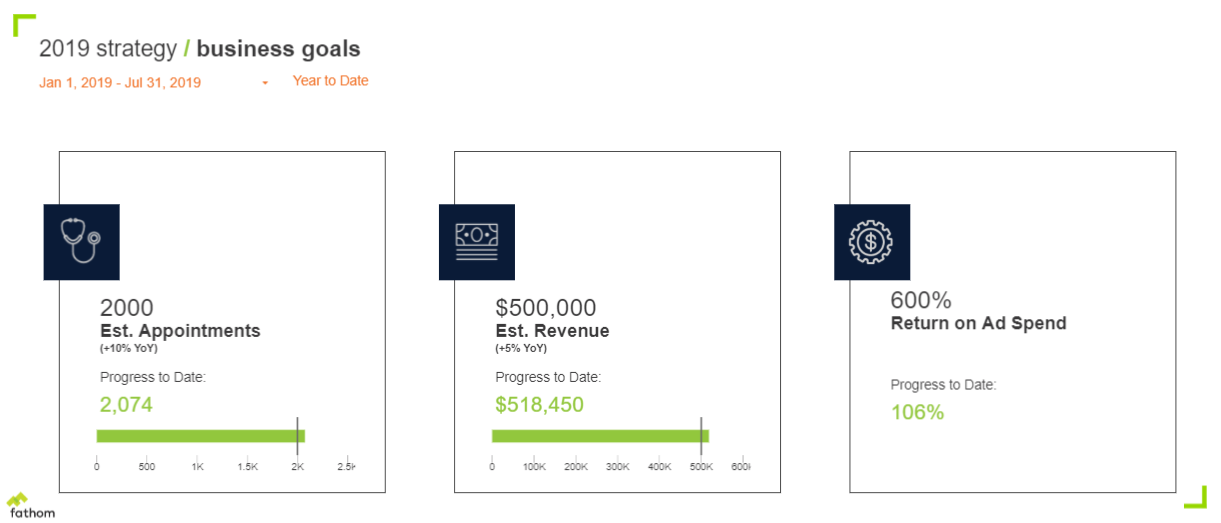Read
marketing + finance: building a profitable partnership
your CFO holds invaluable insight; utilize it to stay ahead of the curve

The relationship between marketing and finance leaders is too often adversarial, holding organizations back from the benefits of a critical partnership.
The most successful organizations have chief marketing and finance officers working together to support their chief executive’s vision; I’ve seen this firsthand. My first job was as an auditor at EY (still Ernst & Young, at the time), and I haven’t strayed far from the finance function since. Now I find myself immersed in the day-to-day challenges of marketing leaders as CEO at Fathom.
There’s no reason these marketing and finance leaders and their teams shouldn’t be in lock step. Just think about the core responsibilities of the CFO:
- Ensuring business decisions are financially sound
- Providing insight and analysis to support the CEO and other organization leaders
- Funding, enabling, and executing the CEO’s key initiatives
Except for funding, those responsibilities also fall in the modern chief marketer’s court. Like the CFO, every decision you make as a marketing leader must be grounded in impact with a clear understanding of expected and realized return on marketing investments. A partnership with the finance leader makes this effort much easier.
So how can you, a marketing leader, build stronger relationships with your finance peers on behalf of your organization and in support of your CEO?
A few words of advice:
what marketing leaders must do
As a finance-first CEO who’s found himself working closely with marketers over the last decade, the marketers I see forge strong relationships with their finance peers do three things:
- Partner with the CFO to develop a deeper understanding of your business’ margins.
Increasing your budget and impact will be easier if you make decisions based on margins. I’ve found that many marketers struggle to determine channel mix and paid media budget allocation. The finance team can help if the marketer is willing to ask. To start the conversation, focus on business goals and margins.
- Invest in the right marketing technology—at the right time—to generate insights.
Technology can, and should, provide visibility and credibility to your strategic recommendations while grounding expectations of future outcomes. Tools like marketing automation platforms and CRMs help illustrate which marketing activities are generating financial outcomes. There are also solutions with lower barriers to entry.
- Don’t wait until measurement and ROI are perfect to start.
Get started now. You can make significant impact by working with your partner in finance to build simple, first-step models that will increase marketing efficiency and set you on the path towards true ROI. Don’t let perfect get in the way of progress.
in practice
The healthcare industry—with its complex decision-making cycles, incongruent technology systems, and patient privacy concerns—serves as the backdrop for our example of how to improve marketing performance and visibility through a deeper partnership with finance. And these basics apply to marketers in any industry.
In my experience, most healthcare marketers begin setting goals with industry benchmarks and historical marketing performance. That’s misguided and leaves a lot of marketing efficiency on the table. Benchmarks, for instance, ignore the nuance of your organization and can be improved upon significantly. Instead, I encourage you to become intimate with the margins.
In healthcare, this means working with finance to understand average revenue by appointment, and, if possible, how revenue by appointment varies by service line. While patient privacy concerns make it difficult to track an individual from initial click through completed appointment, end-to-end tracking isn’t required to make better marketing decisions.
Work with your finance or business intelligence team to understand conversion rates:
- Of those who start forms or place phone calls, how many schedule appointments?
- Of those who scheduled appointments, how many make it to the appointment?
With this data in hand, you’re able to create cost per acquisition targets by service line.


You don’t need end-to-end attribution or a seven-figure technology implementation to bring credibility and visibility to marketing decisions with data. The dashboard above is an example of automated reporting built with Google Data Studio that simply illustrates the marketing effectiveness metrics we just walked through.
Proving marketing effectiveness and opportunity becomes much simpler with views like those above. Sure, the data is based on average rates and revenue, but it’s also likely light years ahead of the average healthcare marketer’s current state—meaning a competitive advantage for you. And that brings me to my final point: don’t wait for perfect ROI data to get started.
This sort of imperfect-but-informed visibility will drastically increase the transparency you’re able to deliver, and transparency breeds trust. Bring this example to your partners in finance and use their experience in financial modeling to evolve the way you measure marketing effectiveness today, not tomorrow.
Helping marketing leaders navigate complex problems is a passion of mine, and I have a strong belief that your success as a marketing leader is maximized if you have a strong relationship with your partner in finance. If you’re interested in continuing this conversation or diving deeper into the ways you can build in-roads with finance as a marketing leader, reach out. I look forward to the conversation.
resources
CMO.com: Why CMOs and CFOs Should Be Allies
EY: Partnering for Performance


